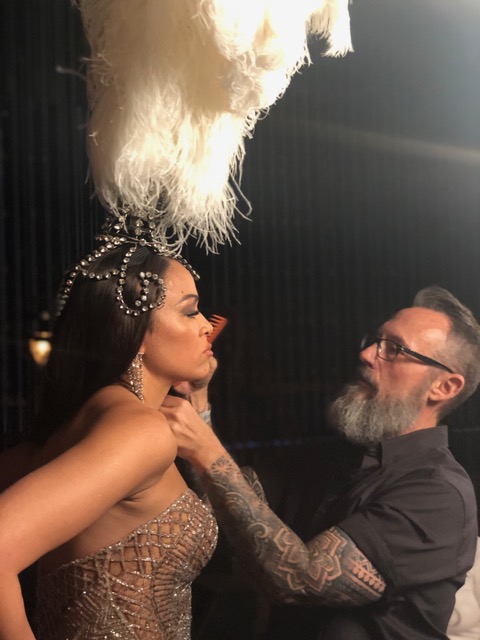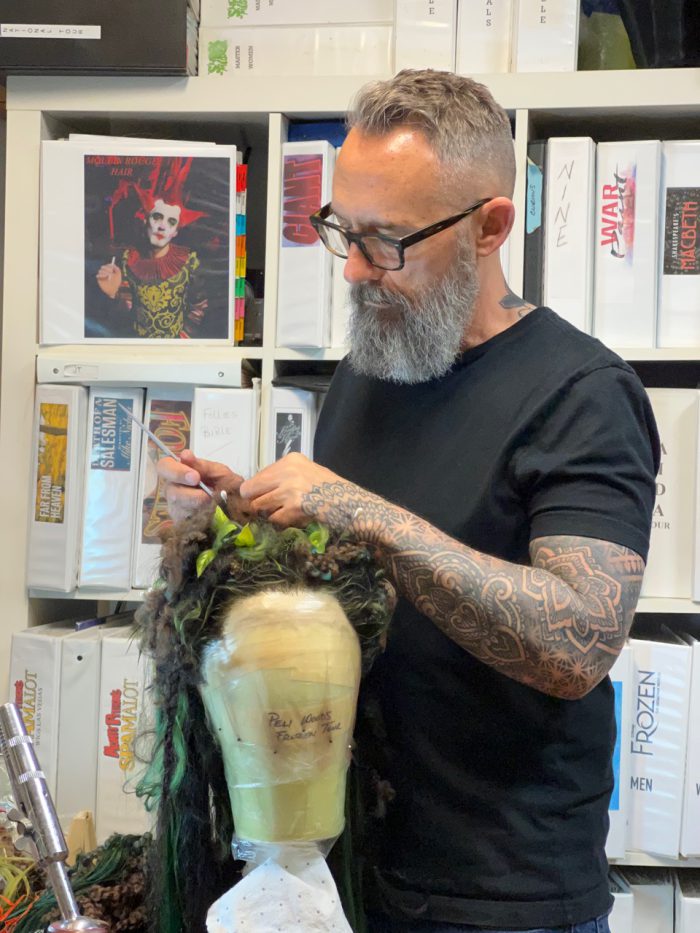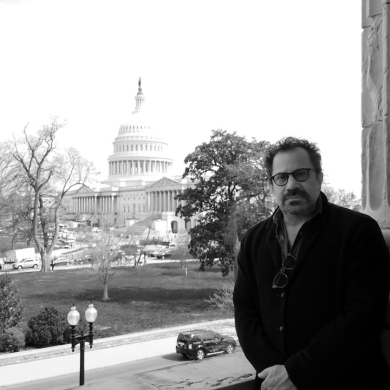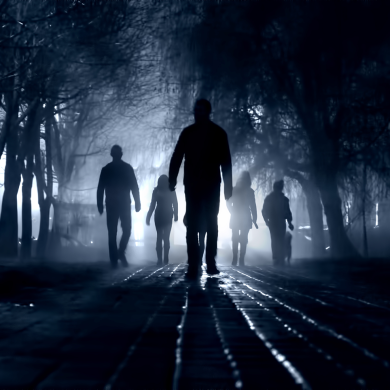For over 40 years, David Brian Brown has worked in theater, first as a hair stylist and later as a designer, overseeing the entire look of the cast’s hairstyle and wigs. Although he spends most of his time on Broadway, his resume includes film and television. In fact, he earned an Emmy® nomination for his work on Angels in America (2003). He really raised the bar for side hustles!
Not one to rest on his laurels, David founded The Independent Wig Co., LLC, in 2011. Three of his handmade wigs were featured in a 2014 article from The New York Times. We’re especially awed by a gnarly witch’s wig from Macbeth. Most recently, David won a Drama Desk Award – his second – for hair and wigs from Mrs. Doubtfire: The Musical.
David generously cleared an hour in his schedule to chat with CreativeFuture’s Bryan Alkemeyer. Even though David was juggling numerous productions and facing pandemic-related crises, he was a calm, delightful presence as he shared his story – and the wisdom of over four decades.
BRYAN ALKEMEYER: I read you first got started at the Chicago Lyric Opera. Did you always know that you wanted to work in the arts?
DAVID BRIAN BROWN: Growing up, I didn’t know what I wanted to do with my life. My introduction into show business was that my dad was an artist and also a clown on television.
When I was trying to figure out what I wanted to do with my life, I thought, “Well, I really love to look at beautiful women – so why don’t I learn how to make women beautiful?” So, I went to beauty school!
While I was in school, I had some friends that were associated with the opera, and they told me, “Hey, they’re looking for people in the hair department.” I said, “Okay, great!” While I was working there, a touring production of a Broadway show was starting in Chicago. They needed a local hairdresser. My boss at the opera recommended me for it. It was crazy because I was still in beauty school!
BA: You were just thrown in? Trial by fire? And you were touring?
DBB: Yes – the tour started in Chicago, so it was the first stop. When the Chicago show finished, they asked me if I wanted to tour, and I said, “Yeah, sure!” I was 19 or 20. The Broadway production was still running on Broadway, so after I had toured with the show for about six months, management reached out and said, “The hairdresser on Broadway is leaving. Do you want to go take over the Broadway show?”
I had a boyfriend who was an actor and lived in New York, so I said, “Of course I would.”
BA: What an opportunity!
DBB: I took advantage of the situation, and obviously, along the way I’ve proved myself.
BA: I would say so! I mean, an Emmy® nomination, and a resume including 100 Broadway productions, when counting both your supervising jobs and then design jobs, of which there are over 50.
DBB: It’s pretty crazy when I think about it. It’s a lot.
For about sixteen years, I supervised shows, so I was working every single night. Eventually, a costume designer asked me if I was interested in designing a show that he was designing, and I said, “Sure!” That kicked off my design career.
[Ed. note: “designers” oversee the entire look of the cast’s hairstyles and wigs for a show.]
For a while, I had to balance both careers. Ultimately, I went over into strictly designing, and working in film occasionally. But I like the lifestyle of theater better. Film and television wouldn’t be my first choice, just because of lifestyle.

BA: How do you mean?
DBB: It’s getting up at 3:30 in the morning, being on a different schedule every day, possibly in a different location every day. It’s hard on your body – or it’s hard on my body anyways – and even as a youngster, it was difficult.
BA: When I read online that your first love was the stage, I didn’t think about work-life balance. I started wondering if the demands or opportunities of designing for one or the other were different.
DBB: There definitely is a big difference. For a film, the wig construction must be much more delicate. Hi-def kills us hair and makeup people! The detail work is much more important in film and television than it would be in theater.
BA: Are there any productions that you’ve done both for stage and for film?
DBB: One time, we were just about to shoot our London production of Frozen: The Musical for Disney+. It was going to be a big release. There was a lot of money involved, so ultimately, many, many wigs were going to be rebuilt with a hi-def lace and much more detail.
It’s been postponed at this point, but I have done that on other productions.
BA: Especially since you’ve founded your own wig company, it strikes me that in addition to being an artist and stylist, you’re also very much a craftsperson. Are you sourcing all the materials?
DBB: I have to source whatever it is I need. Whether that be the right lace or the right hair. I buy most of my hair from a hair vendor in London.
BA: Is it human hair?
DBB: I work in human hair. I’ve only worked in synthetic when it’s been appropriate that a character would have a synthetic wig on. Otherwise, all my work is done in human hair. It has the properties that you want it to have.
It’s realistic because it is human hair. But it also allows you to make changes, and having the ability to change something is great because you will see something onstage sometimes and think to yourself, “That color is a little off” or “I wish it could add more texture to it.” Human hair allows you to do that.

BA: I can imagine. Are there any moments where you remember having to make some revision that had a big impact?
DBB: One instance was in Moulin Rouge.
We have what’s called the preshow, which happens as the audience is arriving. During the preshow, the women have wigs that are also used in the second act for the boulevardier scene. When we first started in Boston, the wigs were dyed to go with the costumes, which were all in pastel colors.
When we put them onstage for the preshow – which is lit darkly and with very red lighting – the wigs ended up looking gray. We had to go in and dye them all with fluorescent, bright colors, which is the total opposite of what we started out with.
Had I made those wigs in synthetic, then the costume designer and director would have had to accept them as they were, or we would have had to toss them out and rebuild them at a huge cost.
BA: How do you think about your role, given that theater is so collaborative? How would you explain the importance of the hairstyling, hair design, and wigs to someone who is not a technician or a craftsperson or an artist?
DBB: If any audience member is even noticing the hair – then it’s a mistake.
BA: Really?
DBB: Yeah. Obviously, the wigs that I was just talking about in Moulin Rouge – people are going to look at those particular wigs because they are vibrantly colored.
But anything else? The leading lady’s hair? Other than looking at her and thinking that she’s beautiful, you shouldn’t think, “Is she wearing a wig, or is she not wearing a wig?” You shouldn’t be thinking about her hair. Ultimately, it should complement the character and the costumes, but it should be so honest that you’re not looking at it. It’s a finish to the actor’s look.
BA: I know that you currently mentor people through the Reel Works program. Did you get interested in mentorship because of any mentors in your past?
DBB: I just believe in giving back.
I can’t say I had a specific mentor. I learned a lot by my mistakes. And that’s what I would love to share with somebody else, so they don’t make my mistakes, or it makes it a little easier for them to go forward.
BA: It’s such a humble way to put it. “Let me tell you all the ways I went wrong.”
DBB: Yeah, exactly. But I love what I do, and I’m really grateful for the opportunities that have been given to me. How many people can say that? How many people can really say that they love their work?
BA: I have one question just out of curiosity. I’m dying to know what the first production you got involved with was – the one back with the Chicago Lyric Opera, the one that you took over.
DBB: It was a Neil Simon musical called They’re Playing Our Song. Marvin Hamlish wrote the music; Neil Simon wrote the book. The original Broadway production starred Lucie Arnaz and Robert Klein. I put out subsequent productions of it – for all the touring productions, and some regional productions. I was lucky because, as I said, I was really green.
So I didn’t know what I was doing. [Laughter]
BA: It worked out!
DBB: It totally, totally worked out. I’m really fortunate.



